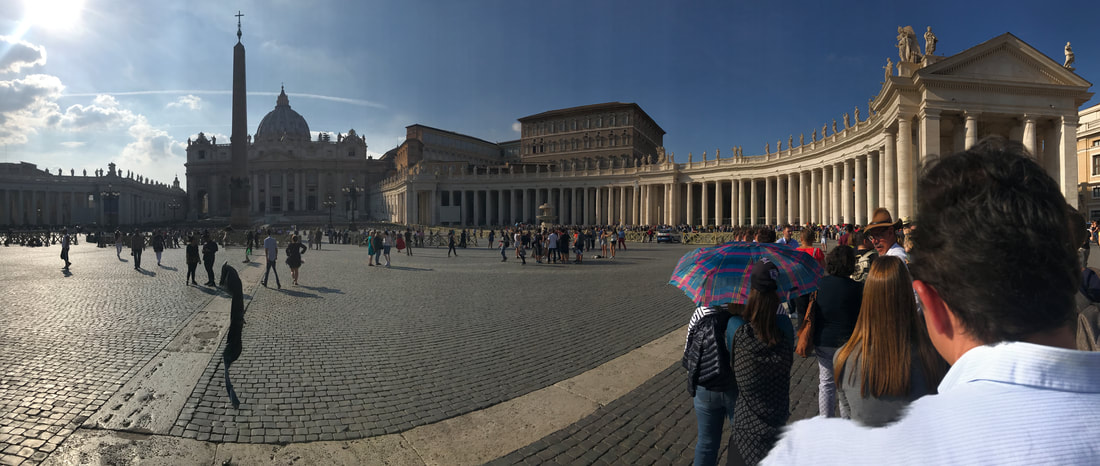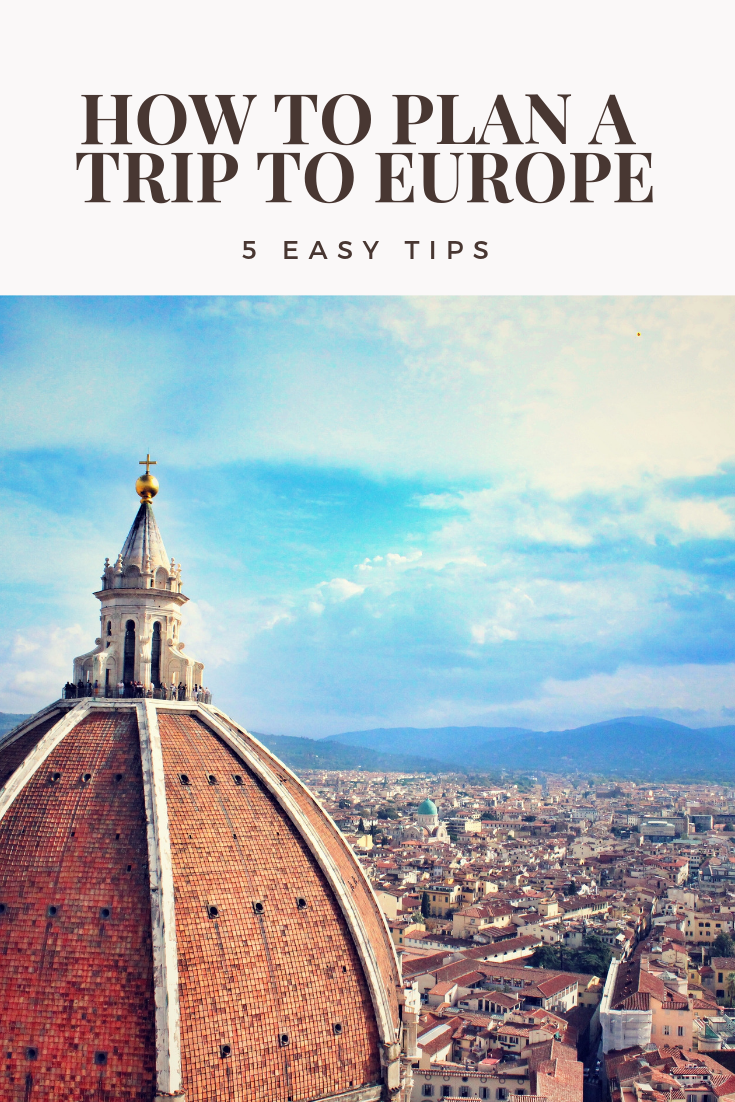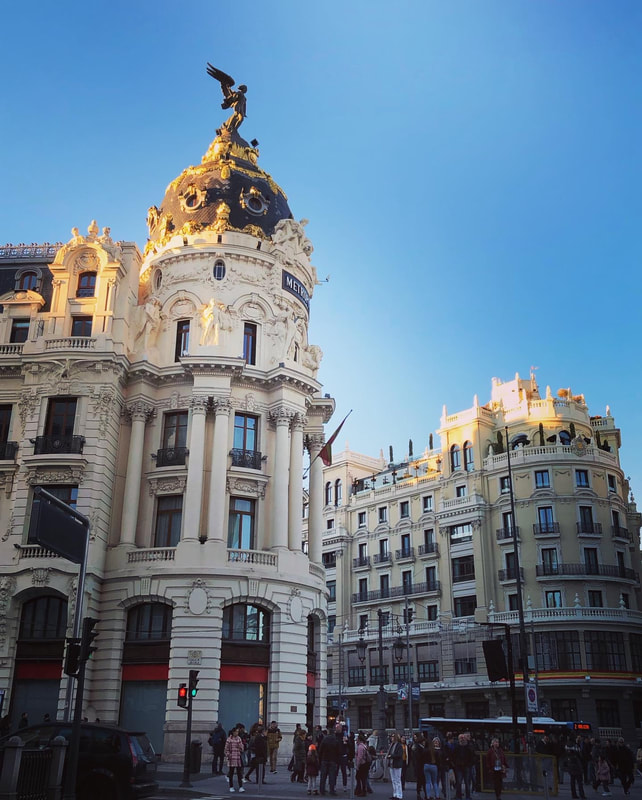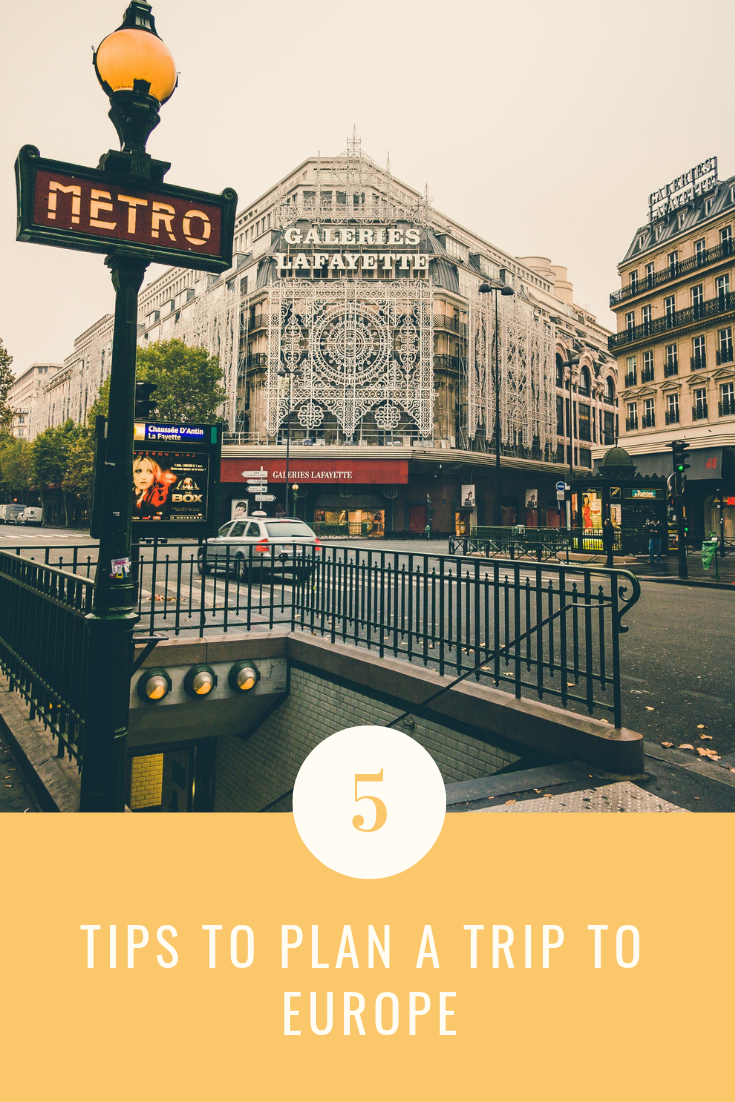|
Disclosure: some of the links below are affiliate links. If you purchase a linked item, I will make a commission, at no extra charge to you. As an Amazon Associate, I earn from qualifying purchases.
*Originally published November, 2018. Updated February, 2020 So you're going to Europe!
I've been asked by a lot of friends and family lately how to "correctly" plan a trip to Europe. Where do you even start?
And I'll admit, on the first trip I planned myself, 5 years ago now, I was completely overwhelmed. From learning everything I needed to know about a new city, to buying guidebooks, and the plethora of online resources, in an age of "information," sometimes, frankly, I'd rather have less information at my fingertips. Each time I plan a new trip to Europe, I struggle with my age-old question: am I over-planning the trip, or am I not doing my homework? Am I going to do so little homework that I end up at all the wrong museums at all the worst times and wait in unnecessary lines and end up eating lunch at some horrible tourist trap where the crazy lady next to me spends the entire meal lecturing us about one time she had food poisoning on a cruise ship (this happened)? Below you'll find my tips and tricks to plan your trip to Europe in advance. If this is your first trip to Europe *ever,* be sure to read my First Timer's Guide to Visiting Europe. Ok, let's get planning! And if you want to hear more helpful travel tips, don't forget to subscribe to the blog, below! How to Plan a Trip to Europe: Picking a destination
One note before we get started: this Europe-trip-planning process assumes that you have your destination selected. If you're having trouble nailing down a destination, check out these ideas for how to figure out which city in Europe is right for you! And, of course you'll need somewhere to sleep, so check out my thoughts on selecting hotels in Europe, which definitely deserves its own post!
Love it? Pin it!How to Plan a Trip to Europe:
|
|
First, in no particular order, make a list of all the places you just have to see.
Use blogs (yay blogs!), travel books (I'd strongly recommend Rick Steves), your own knowledge of the place to compile a rough list of places that are important to you. It's OK if the sights aren't grouped by neighborhood, etc.- that comes later! |
If you come across restaurants in this search, definitely include those on a separate list, so that you don't lose them. For an approach to selecting restaurants in Europe, check out the full post on that very subject!
FAQ: What if I've been to this city before?
Follow the same approach, and list out places you want to go. It'll likely be less detailed than someone who has never been, and might even include general comments, such as entire neighborhoods that you'd like to explore.
How to Plan a Trip to Europe:
Group attractions by location
Open Google Maps and get sorting!
How to Plan a Trip to Europe:
Decide whether you're going to buy a "Pass"
Lately, it seems that every major tourist city in Europe has developed a "pass." The London Pass and the Paris Pass are the two main options that come to mind. These passes can be very helpful, as they generally are set-up to allow holders free or discounted entry to major tourist sites in the city, for a specific period of time, based on the price of the pass. They often involve the ability to skip lines, or special perks, including transportation, such as hop-on-hop-off buses or boats.
FAQ: Will I save money by buying a "city pass" in Europe?
Generally, city passes are only financially beneficial on first trips to a city, where you intend to take advantage of a large number of tourist sites, including the most expensive ones (such as the aforementioned Tower of London). If you do not intend to visit a large number of the sites that are included, it's better to just pay as you go.
Consider the timeframes in which the passes must be used. Once you start using most passes, it starts a usage period. For example, say you buy a 5 day pass, where the 5 days must be used within 8 days. If you are going on 4 day trips during those 8 days, you are not going to be able to use one of the days.
How to Plan a Trip to Europe:
Pick your day trips
How to Plan a Trip to Europe:
Type-up a day-by-day agenda
I list them out in a Google doc with hypothetical days connected to each planned day. However, I generally also assign a number to each day (Wednesday is also 3, etc.).
To me, a "planned day" means a list of:
- 2-4 destinations we're hoping to see that day, all of which are reasonably close for walking, or a reasonable public transit trip, and the routes between them,
- a restaurant for lunch,
- a restaurant for dinner, but I generally avoid making reservations, unless the desired locale is extremely crowded.
- We generally don't do much at night, so that's normally open unless we're seeing a show.
What if I'm feeling over-scheduled??
Generally, we switch around the flexible days as the trip progresses, hence the numbering. The numbers probably sound silly, but it gets confusing when you change Wednesday for Saturday and half of Monday. Some of the most essential things to research in advance and lock-in on your schedule, are night openings of museums - a must, if they've available, days that places aren't open (generally Sunday or Monday, but not always the case!), or any times that a place is particularly crowded (for example, if something is closed on Monday, don't go on Tuesday).
How to Plan a Trip to Europe:
Be realistic about your first day
When we arrive on the first day, our goal is to see as much as we want and stay awake.
If you arrive fairly early and efficiently, using the Heathrow Express, for example, we generally are even able to see a locale. For example, in Rome, we walked by the Pantheon at 4:30 on a Friday and found there wasn't a line - weird - so naturally we went in. Having checked a major place off of our list, of course that meant that we needed to...
How to Plan a Trip to Europe:
Rearrange the schedule, as necessary
If it rains on the day we intended to go to Hampton Court, maybe we switch that with the British Museum day. If I'm feeling exhausted one day, we might move days to push back a day trip. I find it works well - we have some form of a plan so that we see the places we want to see in an organized way, but we also don't feel stuck to a rigid plan that would have us standing at the top of Stirling Castle in a blistering windstorm, missing one of the top attractions there - the lovely view!
By the end of the trip, we've generally seen the vast majority of the things we wanted to, and in a relatively organized fashion.
How to Plan a Trip to Europe:
Be flexible with your plan
Rearrange as necessary and be flexible!!
Thanks so much for stopping by!
Bon voyage! xx
For country-specific posts:
You may also like...
Like it? Pin it!
Hi
I love to travel... and really appreciate you for details of analysis sharing about, to visit Europe.
Nice article.
Leave a Reply.
Archives
July 2024
June 2024
May 2024
April 2024
March 2024
February 2024
January 2024
December 2023
November 2023
August 2023
April 2023
September 2020
May 2020
March 2020
February 2020
Categories
All
Dining
Europe
Flights
Hotels
Packing
Road Trips
Shopping
Train Travel
Travel Blogging
Travel Planning
This website uses marketing and tracking technologies. Opting out of this will opt you out of all cookies, except for those needed to run the website. Note that some products may not work as well without tracking cookies.
Opt Out of Cookies







 RSS Feed
RSS Feed